- Fresh UGC is essential to SEO. From reviews and Q&A to user-submitted images and video, UGC provides Google with a steady stream of fresh, keyword-rich content
- Keywords are the foundation of product page SEO. If you want to improve your product’s rank, you need to include keywords in your title tag, meta description, H1 tag, and product description.
- Additional product page SEO best practices include marking up images with alt text, using a clear URL structure, and implementing schema markup.
As any marketer will tell you, there’s an art to crafting the perfect product page. You need to design with all the best practice acronyms in mind — CRO (conversion rate optimization), UX (user experience), and SEO (search engine optimization) — and then you need to account for the unique needs of your users and your brand.
Today, we’re focusing on the third of those acronyms: SEO (search engine optimization).
Here are the 5 essential SEO elements to include on your product pages for improved rankings, traffic, and conversions.
1. UGC is good for SEO
First off, we’re a Ratings and Reviews company and we know all about the importance of UGC from an SEO perspective.
The top search results always feature product pages with lots of reviews and a good rating. That’s because Google knows people are looking for the best product, and reviews and ratings help Google determine that.
But reviews are just one aspect of user-generated content, or UGC. There’s also Q&A and user-submitted images and videos. Together, all three forms of UGC are essential to product SEO for a few key reasons:
- UGC provides additional content for the search engines to gobble up. The more content Google has, the better their understanding of your site.
- That content is often keyword-rich. Customers include all sorts of key phrases in their reviews, more than you could ever include in a snappy product description.
- The content is being generated on a regular basis, signaling to Google that your page is still relevant to people searching for these keywords.
Plus, people WANT to see UGC. 88% of shoppers specifically look for images and videos provided by other consumers before making a purchase, and after interacting with UGC, they become twice as likely to convert.
The takeaway? Give the shoppers what they want!
Crocs features all three UGC elements on their product pages, with an interactive photo gallery, and a searchable Q&A and Reviews section.
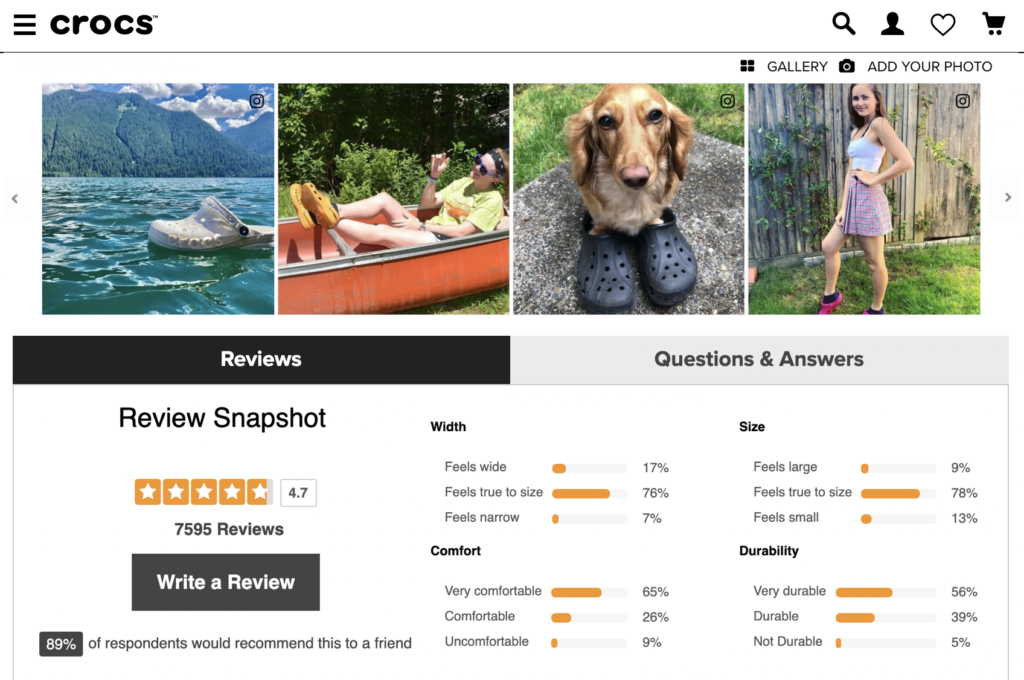
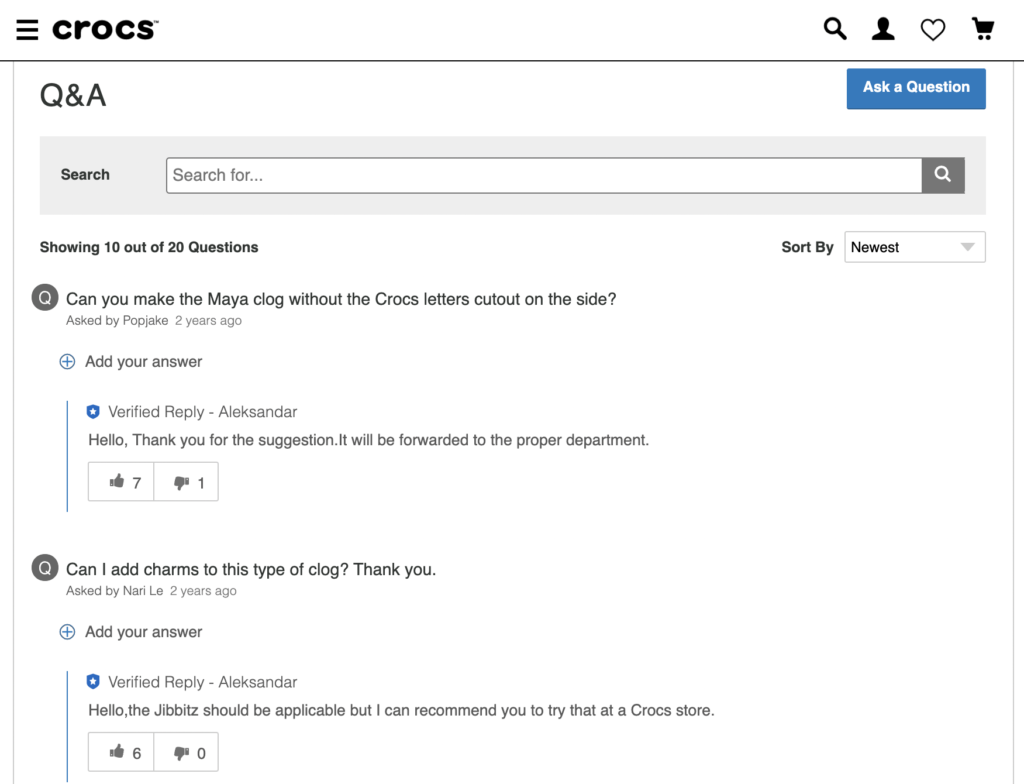
Ulta Beauty’s Reviews section includes clickable filters that make it easy for shoppers to hone in on reviews from people like them.These filters also highlight keywords that are relevant to Google, helping Google connect the dots that this product is good for someone with “sensitive eyes” or anyone looking for a “long lasting” eyebrow pencil.
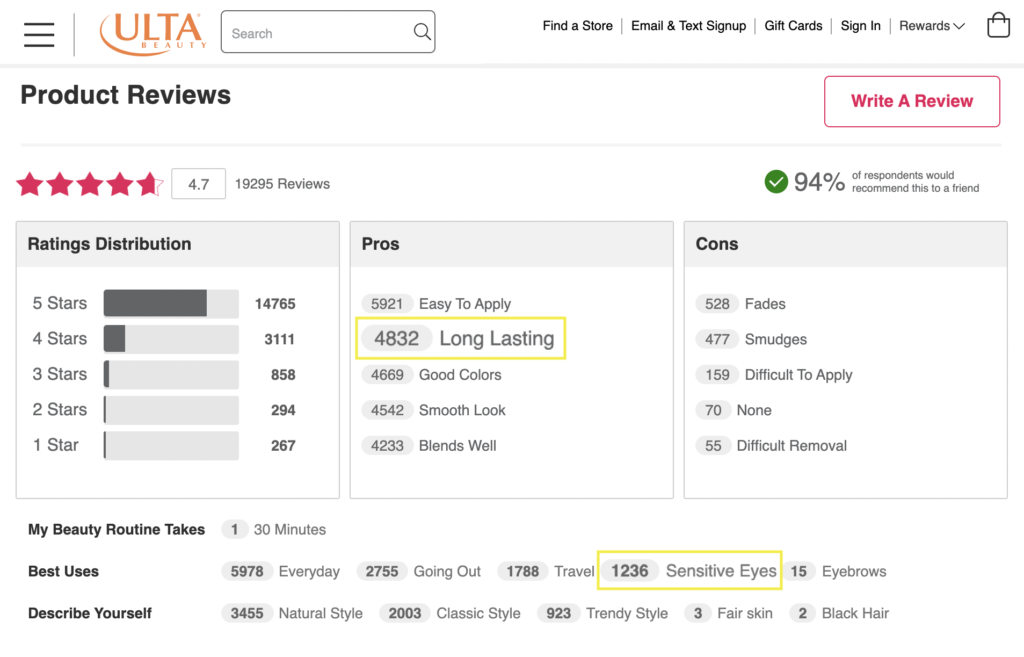
If you dig into the reviews, you’ll notice plenty more keywords. Take a look at how many we highlighted in this one:
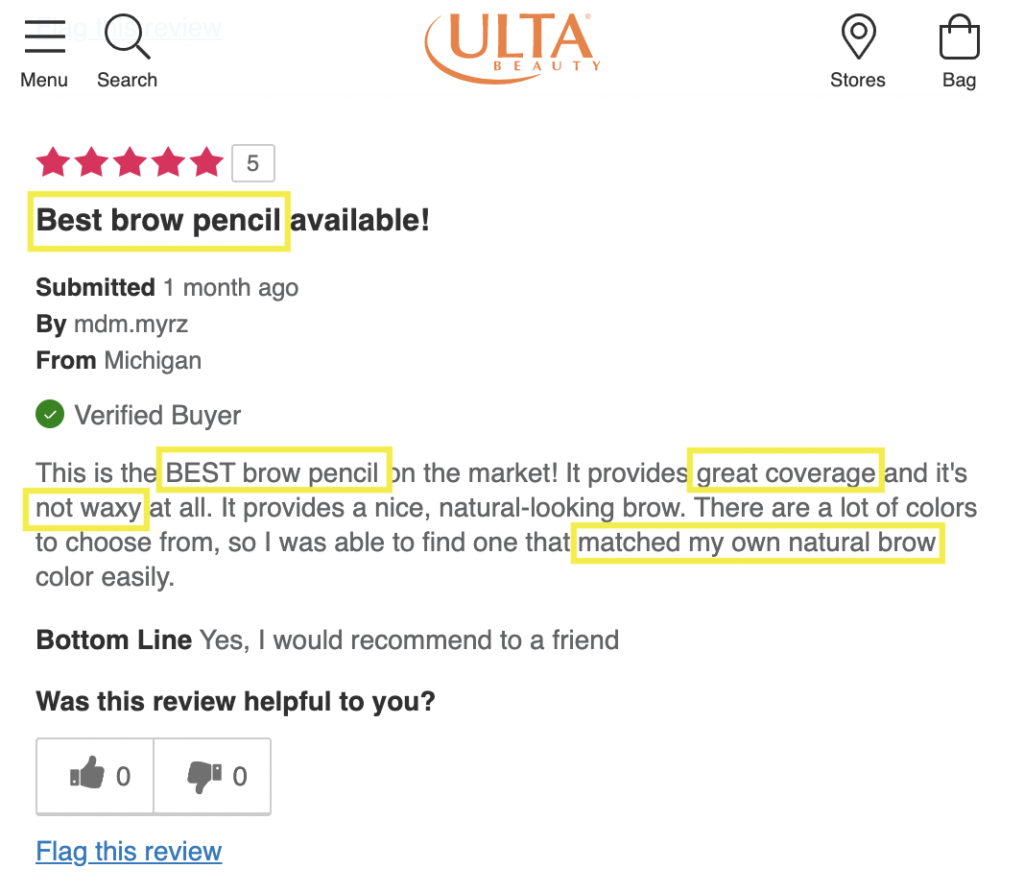
It’s no wonder a recent study found that having keywords in your reviews is one of the top ranking factors for product pages!
2. Use keywords in all the right places
Keywords are the foundation of SEO. Whether it’s “waterproof hiking jacket” or “color safe shampoo,” keywords are the words people use during discovery and it’s important to use them when describing your products.
If you want to increase your visibility in search engines, you’ve got to include keywords in all the key places (see what we did there?) on your product page. Your customers will already take care of keywords for you in your product reviews. Where else can you include them?
- Your title tag
- Your meta description
- Your H1
- Product description
Title tag
Your title tag appears alongside your Google search result in Google. It lives in your site code, so you’ll never see it unless you go to Google. You can fit about 55-60 characters of text in your title tag.
Many retailers simply copy and paste their product name, but this is a chance to speak directly to what searchers are looking for. iRobot does it best, with a combination of their product name, and the keyword “best robot mop”:

Meta description
Your meta description is the two lines of text that appear beneath your title tag in the Google search results. Like your title tag, it lives in your site code, not on the front-end of your product page.
Together, these two elements serve as a virtual billboard — advertising your product to people in the search results. Will your billboard encourage people to click, or to scroll on by? Add keywords, and they’re more likely to click.
It’s common for Google to auto-generate their own meta description using text on the page. Still, it’s a best practice to write your own so you have more control over how your brand appears in the search results. You can include up to 160 characters.
Vistaprint knows that people use a variety of keywords to describe their products, from “custom address stickers” to “return address labels.” They include them all in their title tag and meta description:
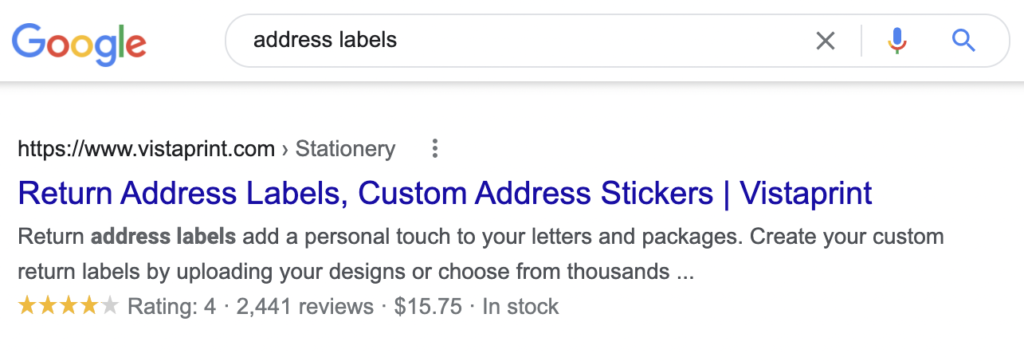
H1 tag
On the page itself, you probably have a big bold heading that puts your product name in bold. This is your h1 tag, and it’s one more area where you can incorporate a keyword.
For example, by adding the word “golf,” Bonobos is able to help Google differentiate between this performance polo and their other performance polos when people are searching for golf polo shirts.
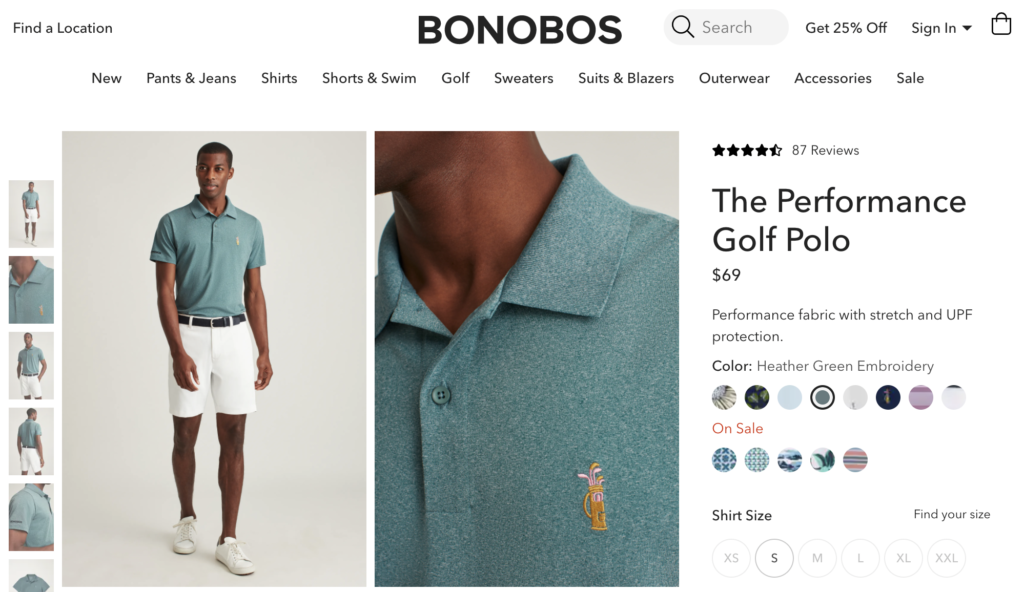
Product description
Finally, you can include keywords in the biggest piece of text on your product page: the product description. When writing your product descriptions, keep in mind the pain points people are looking for your product to solve. They may be searching for those very same things in Google!
In their product description, Canyon Bakehouse makes sure to include important keywords a person on a gluten-free diet may be looking for, like “certified gluten-free” and “100% whole grains,” or a bread they can use to make “toast” or “sandwiches.”
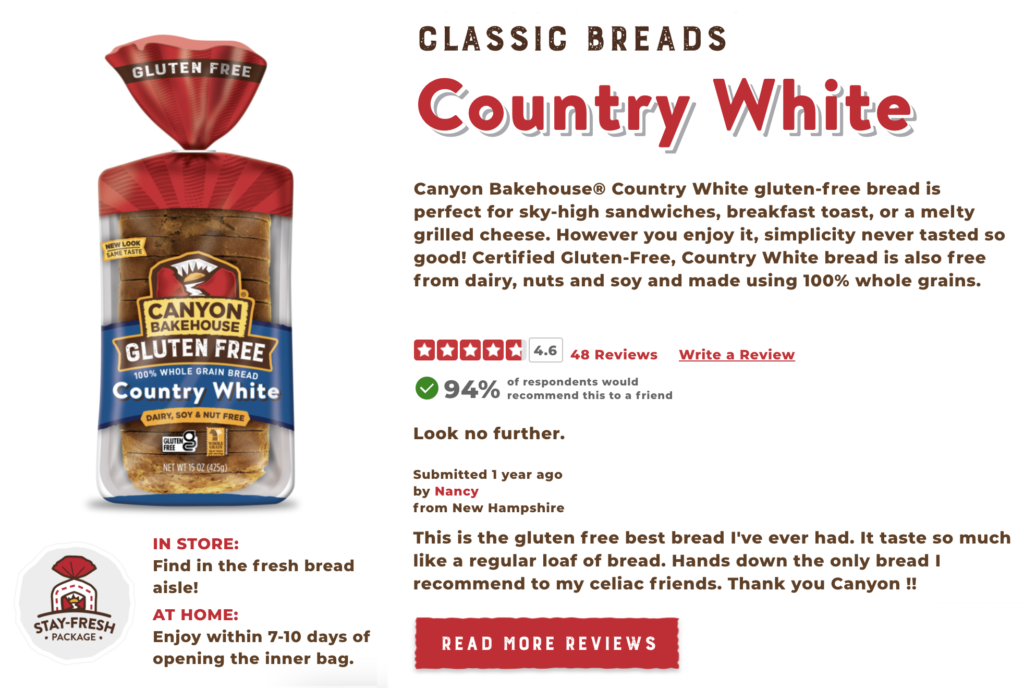
- Open up Google Search Console, and navigate to the Performance report. By default, the report is set to “Queries” at the bottom.
- Toggle over to the Pages tab, and click on an individual page.
- Then, you can toggle back to Queries to view the specific keywords that page is ranking for.
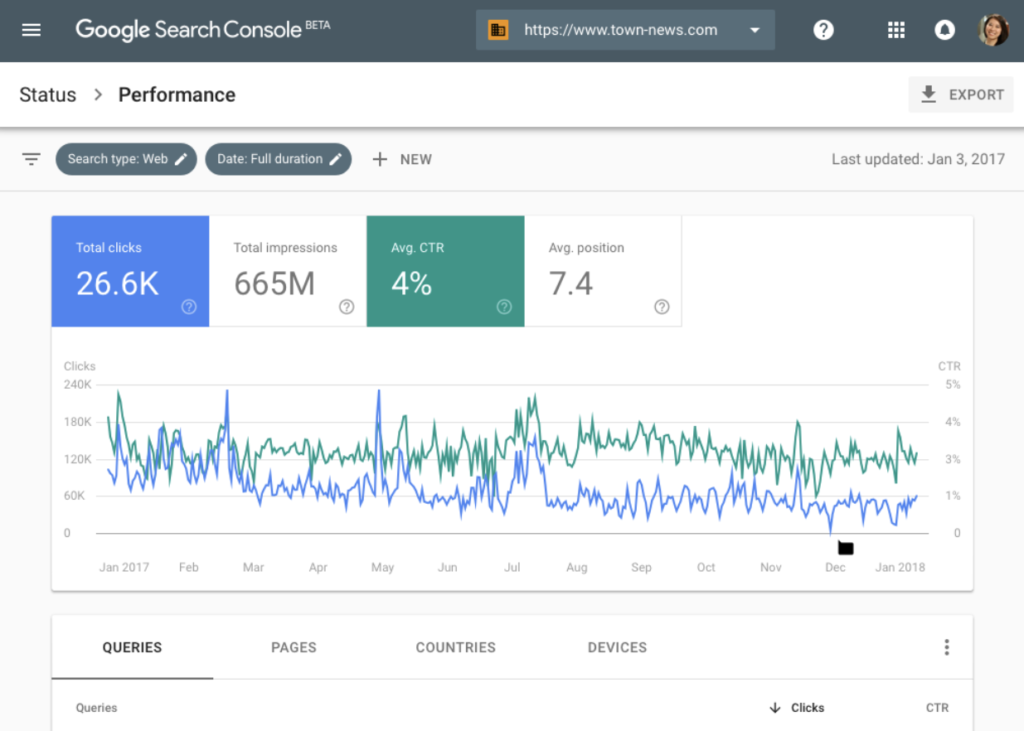
Of course, the Google Search Console report only tells you the keywords you’re currently ranking for. To discover keywords before they start trending in Google, you can look to your review analytics!
All PowerReviews customers using our Ratings & Reviews product with the Review Search feature enabled,now have access to Review Search Reporting. With this tool, you can see the specific keywords customers are entering in when they search through your reviews.
For the clothing retailer below, it’s clear that their customers seriously want to know whether this product is waterproof. Search terms like “waterproof,” “water,” “rain,” and “water resistant” dominate the top search results:
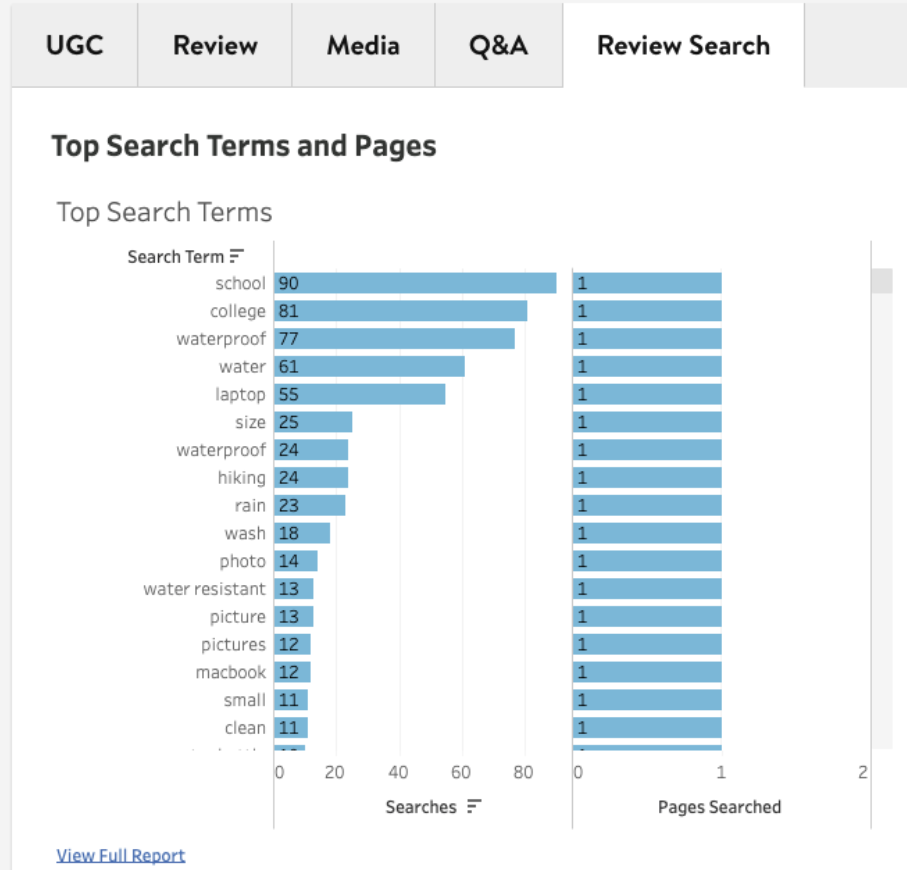
The fact that customers are typing these words into the review search box may indicate that they’re not adequately addressed in the rest of the product page. Thanks to these insights, the retailer can now take action to incorporate waterproof-related keywords into the product page for a SEO boost.
3. Mark up your images
Images speak louder than words. Nowhere is that statement more true than in the world of eCommerce. In fact, according to our recent study 80% of consumers find photos from other customers more valuable than photos from brands or retailers. Shoppers want to see photos of your product from all angles, in action, and in a lifestyle setting.
Now, search engines like Google can’t “see” images (yet), but you can tell them what’s in your image, via a little thing called alt text. Like your title tag and meta description, alt text lives in your site code, where search engines can read it to gather more context. (People who are visually impaired also rely on alt text, as their screen readers read it aloud to describe what’s in an image.)
It’s easy to copy and paste the product name or SKU into the alt text field. It’s also a serious waste of a SEO opportunity. By adding descriptive alt text, you not only make your site more accessible to more people, but you also increase your chances of ranking for the right keywords — and for showing up in Google image search!
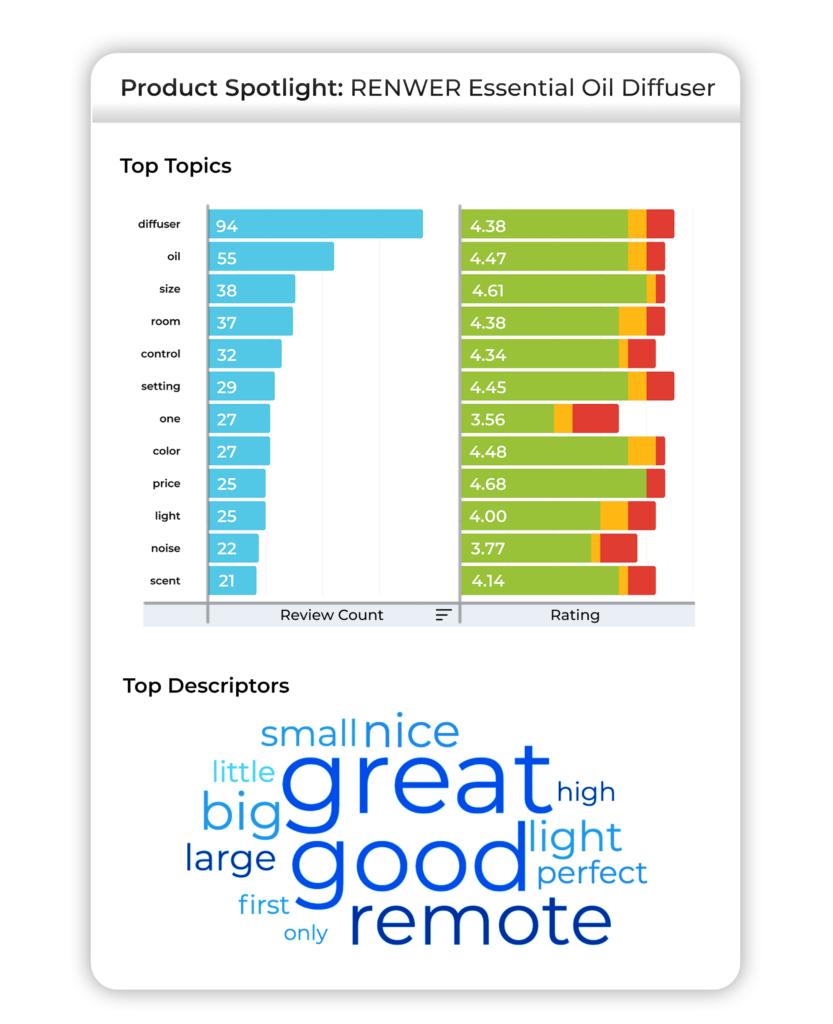
Where can you find the keywords to add to your image alt text? Look at your reviews! Your customers do a fantastic job describing your products using the words other customers use. What phrases come up again and again? Things like “desk chair for kitchen office” or “favorite hot yoga shorts” would be perfect additions for your alt text. PowerReviews customers using our UGC Analytics solution can see the tops words and phrases customers use in their reviews.
Search engines read captions, too. If it makes sense, consider adding them to your images like Room & Board does:
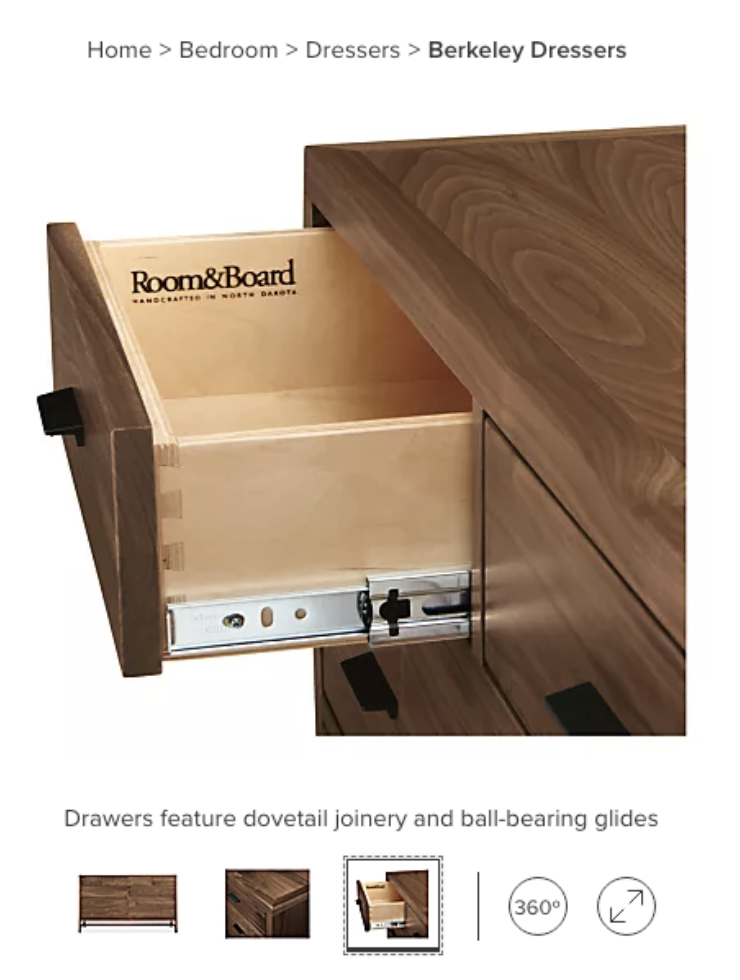
Remember to markup other images on your page beyond the product gallery. For example, The North Face has alt text for the two icons on their product page: “our most sustainable product” and “recycled content.” Adding alt text to these images may encourage Google to show their product when people are searching for sustainable clothing.
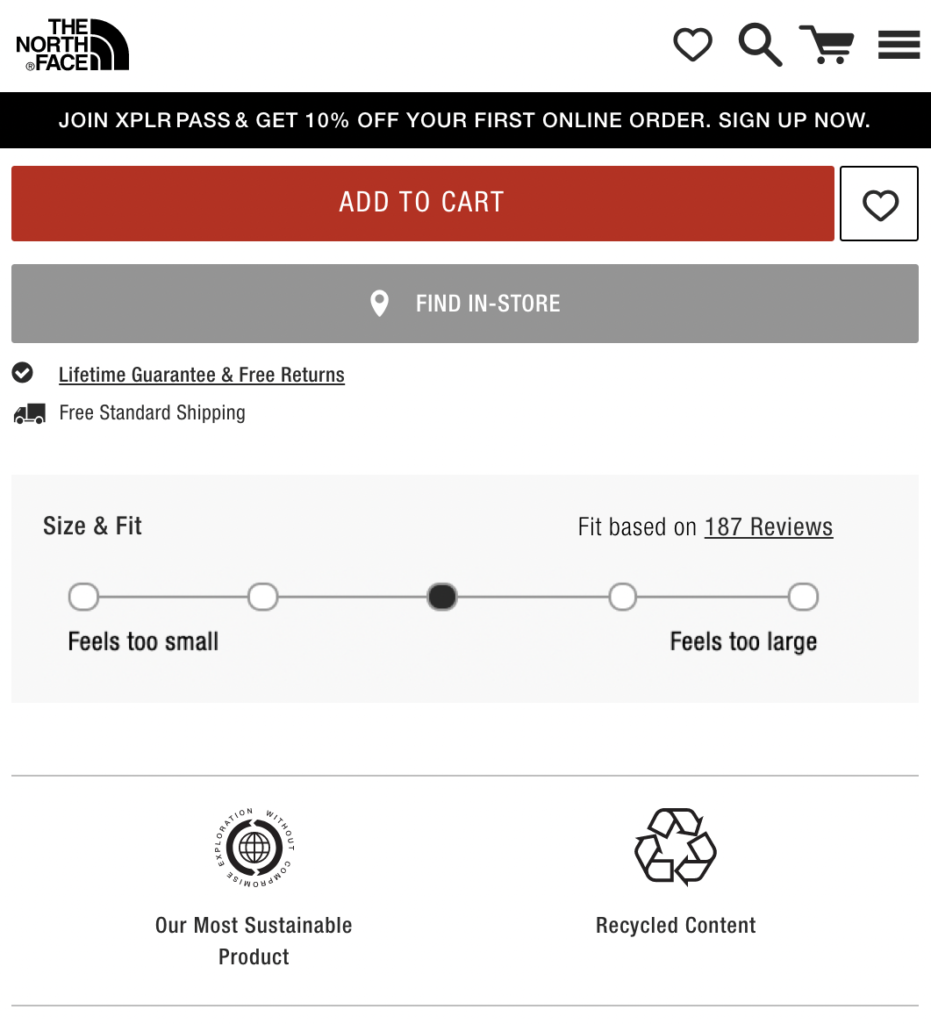
4. Use a clear URL structure
There’s one more thing that shows up in the search results: your URL.
URL structure is an afterthought for many brands, with the developers left to do whatever feels most logical to them. However, a clean, clear URL structure can make the difference between Google crawling your web pages with ease… or getting lost somewhere along the way.
You want to avoid URLs that look like this:
- www.yourbrand.com/us/shop/products/123/product-catalog/xty-1222
Whew, that’s stressful Looking at that URL, I have no idea what the page is offering. I can tell that it’s an ecommerce site, but that’s about it.
SEO-friendly URL structures, on the other hand, look something like this:
- www.yourbrand.com/products/category-name
- www.yourbrand.com/products/category-name/sub-category-name
- www.yourbrand.com/products/category-name/sub-category-name/product-name
As you can see, there’s a clear hierarchy to this hypothetical website. These URLs say, “Hey, Google. We are a retailer and we list products on our website. You can find them via these category, sub-category, or individual product pages.”
Depending on the size of your catalog, you may not need multiple levels to your URL structure. For example, Clif Bar has one level. Look at these simple, keyword-rich URLs:
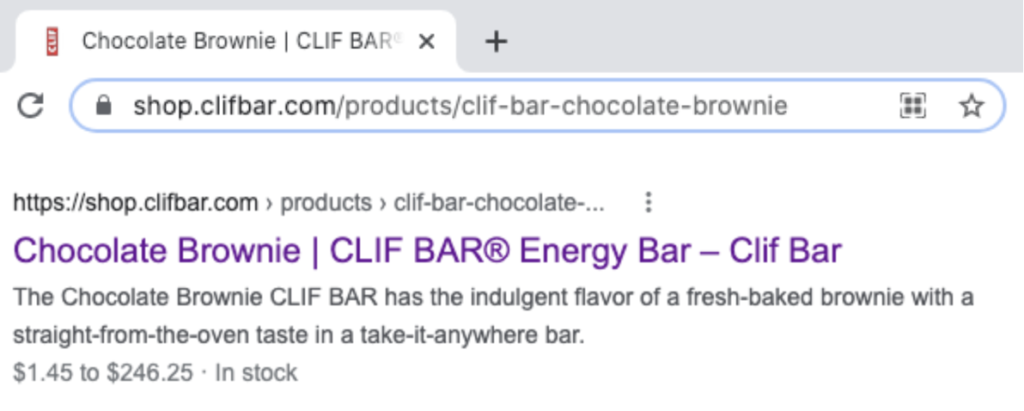
When you have a large product catalog, though, it becomes really helpful to have the different levels, as you can see in this example from Ace Hardware:
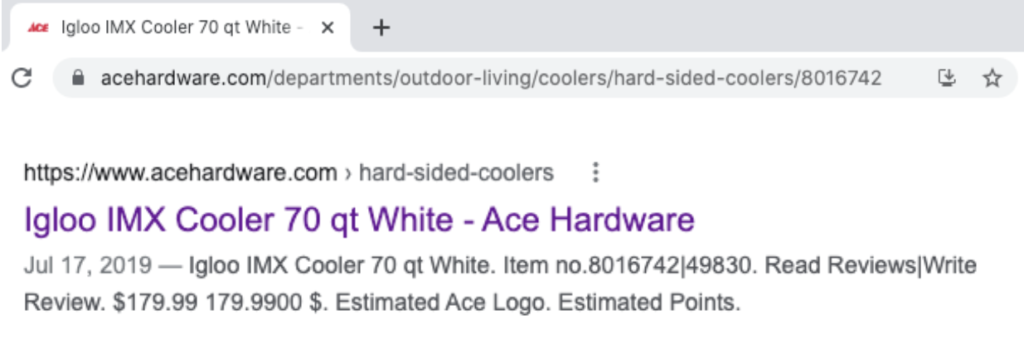
When you have a clear URL structure like this, Google will often display breadcrumbs with your search result. In the Ace Hardware example, that’s the “hard-sided-coolers” above the title tag. That breadcrumb information confirms to potential customers that they a) have the type of cooler they’re looking for and b) have enough of a selection for it to warrant its own category. That’s the kind of information that encourages more clicks and better SEO!
Beyond having a clear structure, you can boost your product page SEO with a SEO-first internal linking strategy. Link to your bestsellers in blog posts, and link to related items or product categories in carousels on your product pages. This improves the discoverability of these products, and gives Google additional semantic meaning about the relationship between these products.
For example, on the product page for their Advanced Night Repair Serum, Estee Lauder links to related products that speak to the same pain points, like their Advanced Night Repair Eye cream.
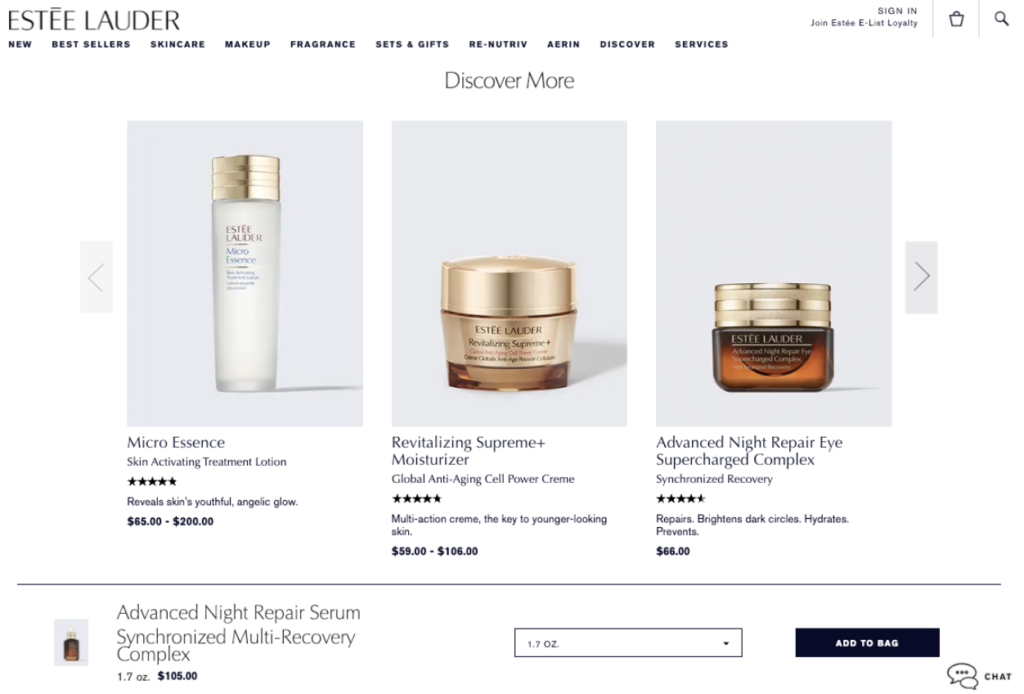
Also keep an eye out for what other products customers mention in their reviews. For example, let’s say you’re an outdoor clothing retailer. Do reviewers regularly mention one of your jackets in their reviews of your hiking boots or hiking pants? Feature that jacket in your Related Products carousel.
5. Implement schema markup
Think back to the last time you were shopping online. Have you ever noticed how the search results for products look different than normal results? For example, they often display star ratings, price, and in-stock information.
Once you start to look for them, you’ll notice these stars show up all over Google:

This extra information, especially the stars, is called rich snippets. Rich snippets stand out to shoppers browsing the Google search results. Rich snippets also expand the size of your search result. Either way, searchers are more likely to click through when they see them.
To enable rich snippets, you need to add schema markup to your website. Schema is code that speaks the search engine’s language and tells them key information about your product, like its price, availability, ratings, and more. To improve your product page SEO, consider adding these schemas to your product pages:
If you’re a PowerReviews customer, good news! We already take care of this for you. Our Review Display comes with schema markup built in.
Psst… Speaking of our Review Display, we just released our 4.1 update which is packed with even more SEO goodness. Display 4.1 boasts a smaller JavaScript bundle size and faster load times. With Google’s recent Page Experience update and continued focus on site speed, these improvements will make our Review Display load even zippier than before. Google will love it, and your users will, too.
From SEO to sales
If you want more conversions, you need more traffic — and that’s where SEO becomes critical. Implement the five best practices above, and see what it does for your rankings, your traffic, and your sales!


